Tags
This tutorial is for a fellow Shibori classmate, Renita, who participated in an amazing workshop with me in Japan. That course was mainly about indigo and Shibori, taught by a gifted fellow, Bryan Whitehead.
So this is how I started…..I bought some silk scarves from Dharma trading company. Cotton and linen work as well.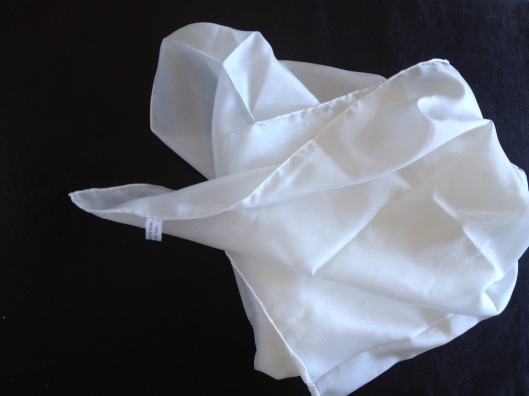
1. Soak the scarf in simmering water for an hour to remove sizing. Some say this is optional.
2. Rinse in filtered water.
3. Lay damp scarf out as flat as possible on a long table, counter or floor.
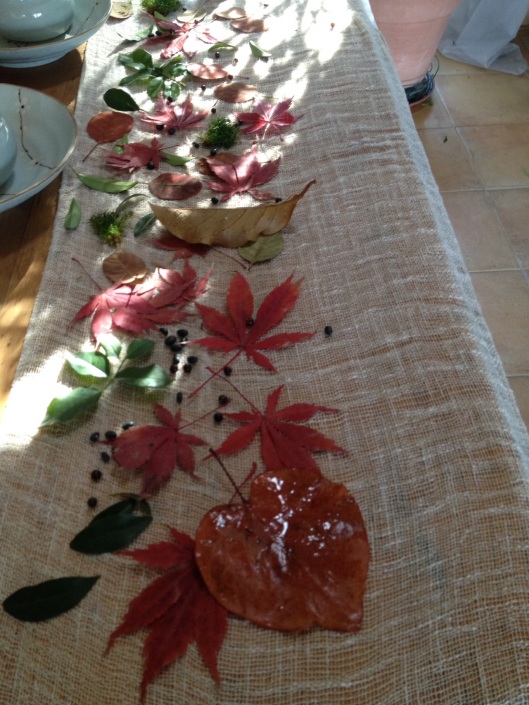
4. Place fresh leaves along one half of the scarf, lengthwise. Consider eucalyptus leaves, blackberry leaves, plum leaves, smoke bush leaves, maple leaves, onion skins, pomegranate skins….see the Internet for a multitude of appropriate plants. I just happened to use those particular plants.
5. I flattened my leaves in a heavy book for a few hours prior to putting them on the scarf. Flattened leaves produce clearer images.
6. For darker colours or dark outlines of leaves, I painted the back of a few leaves with a solution of 2 parts vinegar, one part water, and a couple of rusted iron nails. ( this solution sat overnight before I used it)
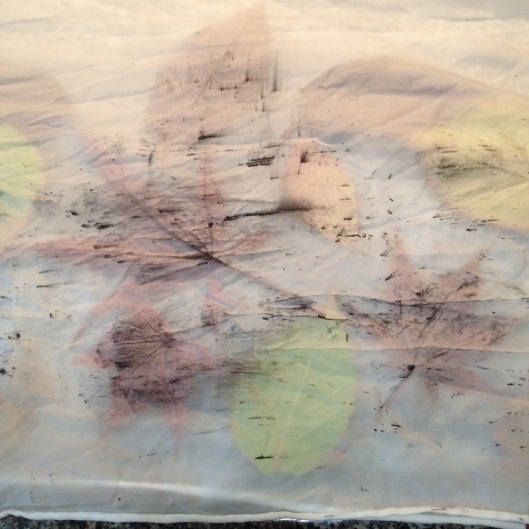
7. I put a piece of very thin copper wire on top of a few leaves on one scarf. It made a lovely dark, curly line.
8. Fold the scarf in half ….lengthwise, over on itself, with leaves enclosed.
9. Roll the scarf from one short end to the other very tightly around a bamboo stick, or berry branch, leaves flat inside, and then wrap the roll very tightly with strong string.
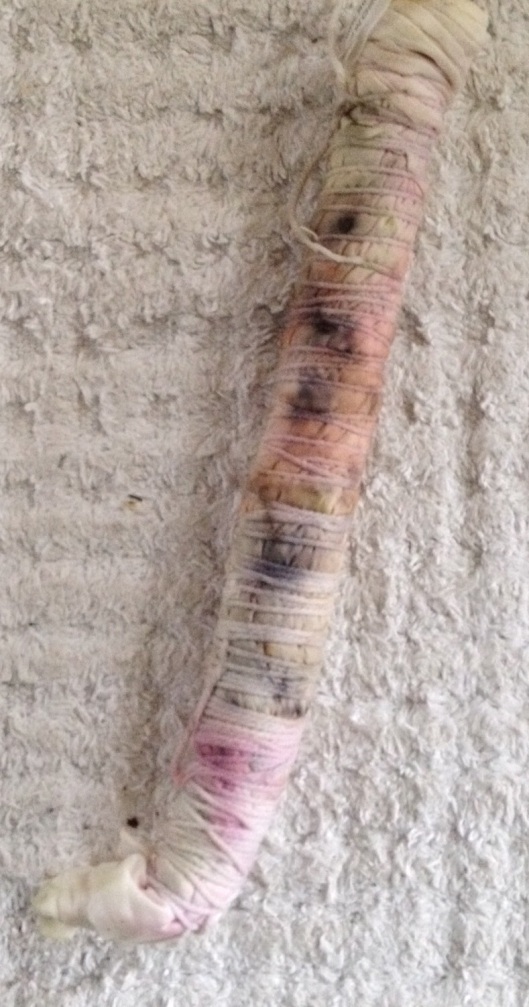
10. Now you have a choice to steam the roll over water or submerge the roll in a simmering dye bath of leaves, or berries or cabbage etc. See the Internet for dye bath ideas.
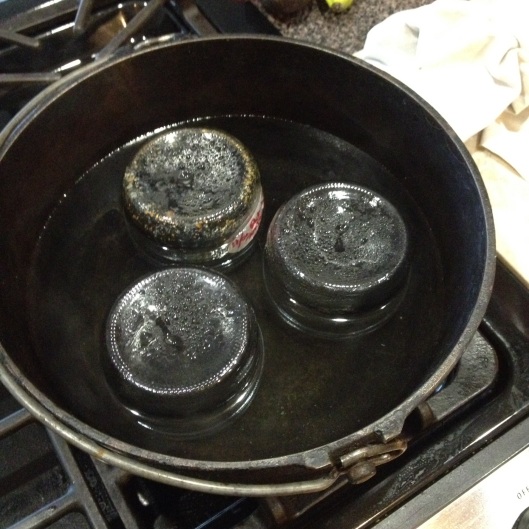
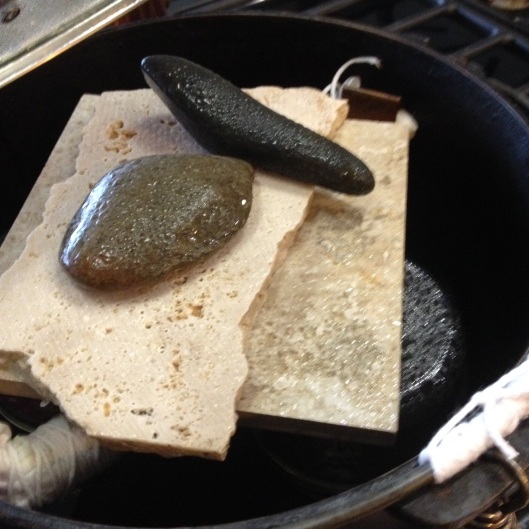
A. Place scarf roll on top of something for steaming ( I used canning jars)and then weight your roll down and cover the pot with a lid. I used an iron pot, but Stainless or aluminum work as well. After 45 minutes remove your steamed rolls and cool…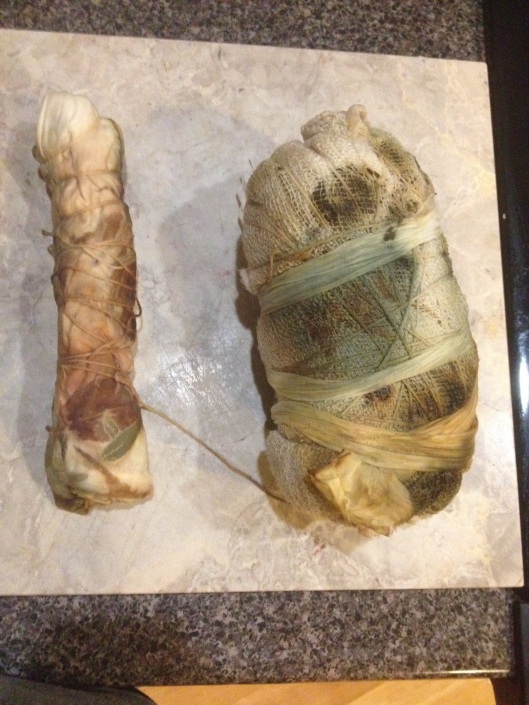
B. Or….submerge your scarf bundle in a simmering bath of leaves for 45 minutes . Leave rolls overnight in pot. Remove rolls when they look quite deeply coloured. This scarf was dyed in a pot with 1/2 a red cabbage. A rinse in washing soda will turn it blue/ green.
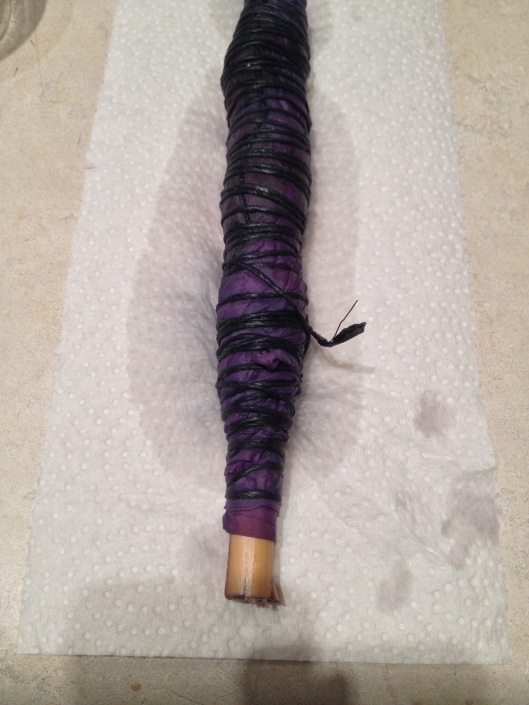
11. Unravel your piece…this is the fun part!
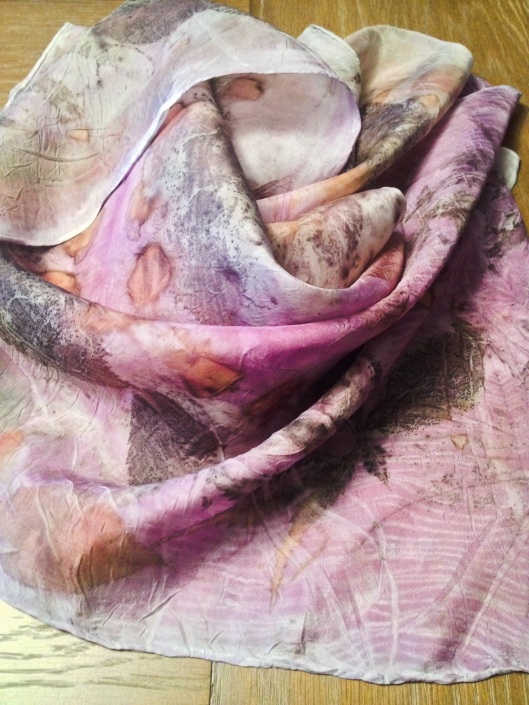
12. You have a choice here using mordants, which help set the dye. Air dry your project and iron well to set colour. Rinse in cool water, or an alum bath or a washing soda bath. The type of rinse may change your colours so I’d recommend reading about different mordants . This was rinsed in alum prior to dyeing.
The mordants….alum and washing soda are relatively harmless. It is recommended to use a mask to prevent inhaling powder and gloves to prevent staining of your hands, especially if one is using an iron solution.
And that’s a simple version to get one started…message me if you have a question.

And I am the lucky recipient of one of these amazing scarves! What a process!
Yep….but quite fun to do, despite the lengthy process. I need to wait until winter is over, now, so the leaves are fresh!